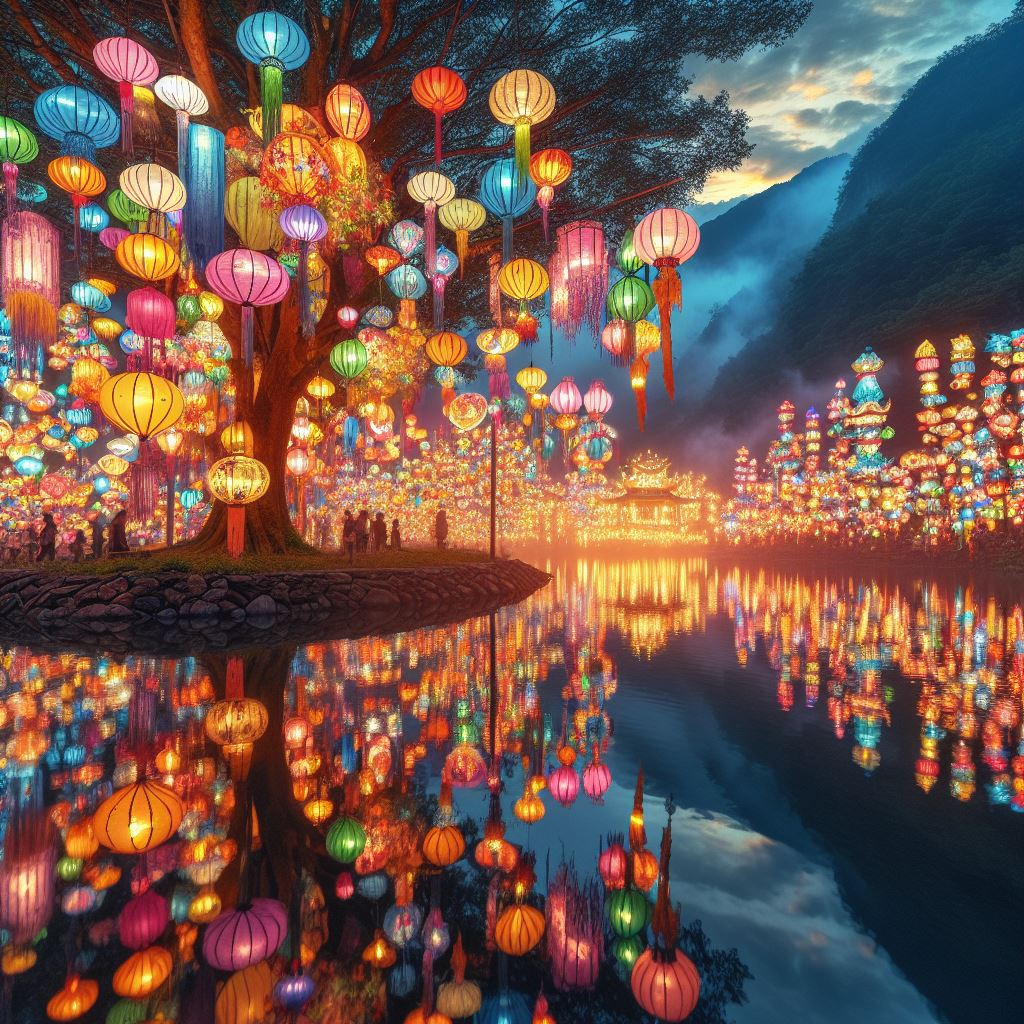
Approximate reading time: 15 minutes
Introduction
The Lantern Festival, also known as Yuanxiao Festival, is a traditional Chinese holiday that marks the end of the Chinese New Year celebrations¹². It is celebrated on the 15th day of the first month of the lunar calendar, usually in February or early March¹². The festival is characterized by various activities, including displaying colorful lanterns, guessing lantern riddles, and eating sweet dumplings known as Tangyuan¹².
Origin and History
The Lantern Festival has a long history that dates back to about 2,000 years ago during the Han Dynasty (202 BC – 220 AD)¹. The exact origin of the festival is unclear, with several different origin stories used to explain the festival’s beginnings¹.
One story suggests that the festival was created during the Lantern Festival period of Emperor Ming of Han (58-75 AD), when Buddhism was becoming popular in China¹. Emperor Ming was a supporter of Buddhism, and when he learned that monks had the habit of lighting lanterns on the 15th day of the first lunar month, he ordered that the palace and individuals should also do so¹. This custom continues to this day as the Lantern Festival¹.
Traditional Activities
Viewing Lantern Displays
As the name suggests, one of the most important parts of the Lantern Festival is viewing and interacting with Chinese lanterns¹. These lanterns, which are usually very intricate, are not basketball-sized but are huge, with some of the larger lanterns being 65 feet (20 meters) tall and 330 feet (100 meters) long¹.
Guessing Lantern Riddles
Guessing lantern riddles (cāidēngmí) is an activity that dates back at least to the Song Dynasty, when scholars would write riddles on small pieces of paper and hang them on lanterns for festival participants to guess¹.
Eating Tangyuan
Another popular Lantern Festival activity is eating Tangyuan¹. These glutinous rice balls are usually filled with a sweet filling made from ingredients like black sesame paste¹.
Modern Celebrations
In modern society, although times have changed, the traditions of the Lantern Festival still maintain a strong vitality⁴. With the advancement of technology, the lanterns people make are more exquisite and colorful, and the themes of lantern riddles are more diverse⁴. The Lantern Festival, as one of the representatives of traditional Chinese festivals, carries a rich historical culture and deep traditional customs⁴.
Conclusion
The Lantern Festival is not only a feast but also a vivid portrayal of Chinese culture, attracting the attention of people all over the world with its unique charm³. Through various activities such as viewing lanterns, guessing riddles, and tasting delicious food, people are inheriting their love for family, friendship, hope, and culture³.

